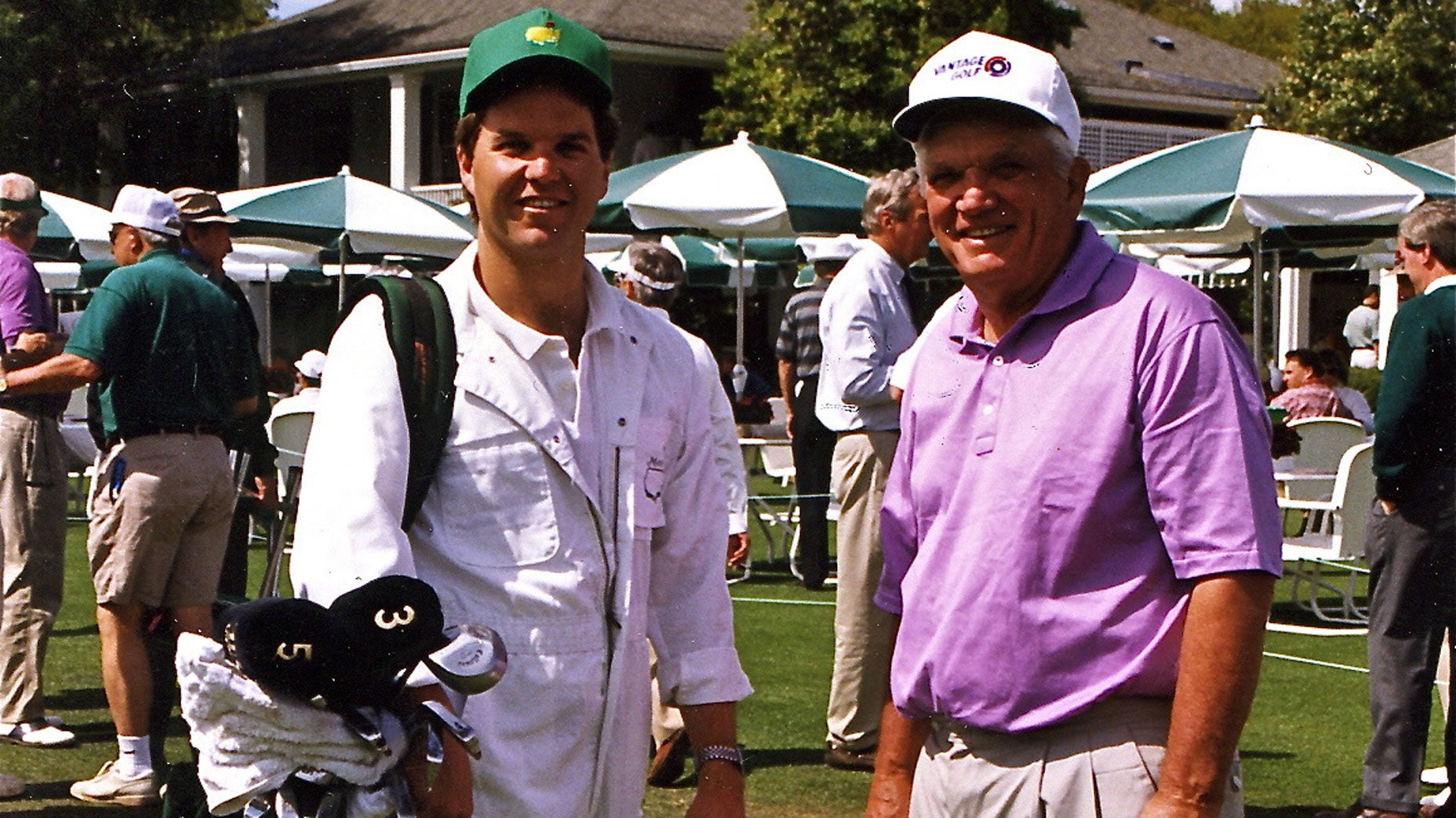Shinnecock Hills has many hallmarks: a timeless design, acres of golden fescue, an iconic Stanford White clubhouse. And then there are the greens — large, heaving, vexing masterpieces. If you can’t putt (or read) the greens at Shinny, you’ll have a long day ahead of you. Which got us thinking: Each of the putting surfaces presents its own challenges, but which of Shinnecock’s greens are most demanding and, more specifically, which putts on those greens are most diabolical?
For answers, we turned to someone who knows these greens inside and out: two-time Shinnecock club champion Alex Robertson. To illustrate the difficulty of the putts, we also tapped our friends at GolfLogix, whose new Putt Breaks green-reading feature helps users see the speed, direction and breaks between their ball and the hole. The app’s high-tech mapping functionality brings the greens to life in eye-popping 3-D — and it will help you understand why these putts keep Shinny members up at night.
PUTT #1
Green: 7th (par 3)
Hole location: Front-right
Ball location: Front-right/middle

At the 2004 U.S. Open at Shinnecock the 7th green made headlines for all the wrong reasons when it was sorely under-watered. Which is a shame, because it’s a magnificent design, a classic “Redan.” The green is raised slightly on the right, and then sweeps on a 45-degree diagonal from front-right to back-left — and is sloped front to back, to boot.
The nastiest putt is one starting from front-right to a hole also cut front-right, but more toward the middle of the green. This combination results in a speedy, sloping, downhill putt that will break hard from right to left, with the very real possibility that the putt could run well by the hole, or even off the green into a front-left bunker. Check it out in 3-D here:
[bc_video video_id=”5796276377001″ account_id=”416418725″ player_id=”B1yPalzMx” embed=”in-page” padding_top=”56%” autoplay=”” min_width=”0px” max_width=”640px” width=”100%” height=”100%”]
PUTT #2
Green: 11th (par 3)
Hole location: Center-right
Ball location: Back-left

The 11th has been called “the shortest par 5 in golf.” Players must at all costs avoid being long, where the green drops off into a collection area, and favor being short. The best place to miss is short-right, which gives the pros an uphill bunker shot — but they best pray they’re not plugged.
Perhaps America’s finest uphill par-3 features a shallow green that slopes away from a player on all sides. The surface slopes hard back to front, especially so from back-left to front-right, so this leaves a super-slick downhill putt with some right-to-left break. (Another wicked challenge presents itself on the green when players must putt from a front/front-left position to a hole cut a little further into the green. The left-to-right break on this putt is severe. It’s uphill to start, then practically moves sideways.) Check it out in 3-D here:
[bc_video video_id=”5796276417001″ account_id=”416418725″ player_id=”B1yPalzMx” embed=”in-page” padding_top=”56%” autoplay=”” min_width=”0px” max_width=”640px” width=”100%” height=”100%”]
PUTT #3
Green: 18th (par 4)
Hole location: Front part of back tier
Ball location: Left-front

The 18th green slopes back-to-front and has multiple tiers. Holes cut on the top tier cause the most angst because a long, uphill putt here makes judging pace very difficult. You have to strike your ball hard enough to make it to that top shelf, yet there’s still more room beyond the hole. If you hit your putt too hard, you’re faced a treacherous downhill comebacker that’s hard to stop. Even on the uphill putt from the front part of the green, there will be a severe left-to-right break as the putt approaches the hole. Check it out in 3-D here:
[bc_video video_id=”5796260856001″ account_id=”416418725″ player_id=”B1yPalzMx” embed=”in-page” padding_top=”56%” autoplay=”” min_width=”0px” max_width=”640px” width=”100%” height=”100%”]
For more information on Putt Breaks or to download the GolfLogix app, click here.







